Ministry of Power
Power ministry establishes UTPRERAK, a Centre of Excellence to Accelerate Adoption of Energy Efficient Technologies in Indian Industry
UTPRERAK will help improve energy efficiency of Indian industry: Union Minister of State for Power Krishan Pal
Energy Efficient Technologies Key to Achieving India’s Emission Reduction Targets under NDCs: Power Secretary
प्रविष्टि तिथि:
26 JUN 2023 8:48PM by PIB Delhi
The Ministry of Power, Government of India has set up a dedicated Centre of Excellence to accelerate industry adoption of clean technologies and thus scale up India’s contribution to the global energy transition. Named UTPRERAK, short for Unnat Takniki Pradarshan Kendra, the Centre of Excellence to Accelerate Adoption of Energy Efficient Technologies seeks to play a catalytic role in improving energy efficiency of Indian industry. The Centre, named otherwise as Advanced Industrial Technology Demonstration Centre (AITDC), has been set up by the Bureau of Energy efficiency (BEE), Ministry of Power, at the Badarpur, New Delhi campus of the National Power Training Institute (NPTI), Ministry of Power. Union Minister of State for Power, Shri Krishan Pal inaugurated the Centre at NPTI Badarpur, New Delhi today, June 26, 2023.
The Centre is mandated to become the key reference and resource institution on industrial energy-efficient technologies. As its name indicates, the Advanced Industrial Technology Demonstration Centre will demonstrate and showcase energy-efficient technologies in key industry sectors. It will act as an exhibition cum information centre and knowledge repository. It will be a knowledge exchange platform, where best practices from across various key sectors could be diffused among industry professionals through workshops and seminars.
More than 10,000 energy professionals are proposed to be trained in next five years
UTPRERAK will also serve as a strategic capacity-building institution and seeks to be a one-stop solution provider for energy professionals from across India for trainings and education in energy efficiency. It is expected to provide intensive training to more than 10,000 energy professionals from the industry and other potential sectors over the next five years.
Besides these, the Centre envisages to also provide key inputs for national energy policy formulation, link education and research in energy-efficient solutions, and develop innovative applied solutions for energy efficiency.
“Adoption of Advanced Technologies Key to becoming Developed Nation by 2047”
Inaugurating the Unnat Takniki Pradarshan Kendra, the Union Minister of State for Power Krishan Pal underlined the necessity of adoption of advanced technologies in order to help realize the Prime Minister’s dream of making India a developed nation by the year 2047. Noting that the government has introduced Production Linked Incentive Schemes in various sectors for this very purpose, the Minister said that the latest technologies are necessary for us to progress and to compete in the global market. “There is a need to manufacture good technology at low cost. UTPRERAK will play an important role in improving energy efficiency of Indian industry; moreover, saving energy will help not just industry, but the nation as well.”
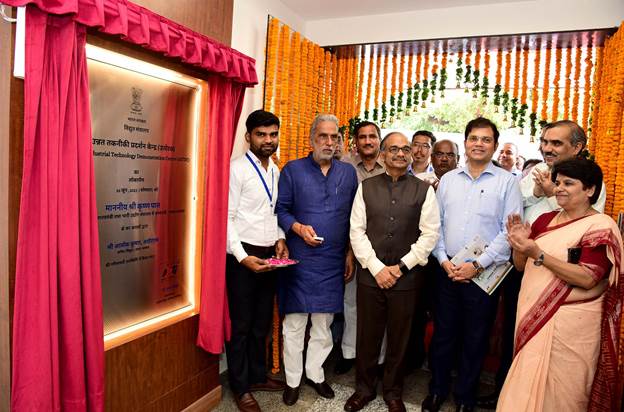
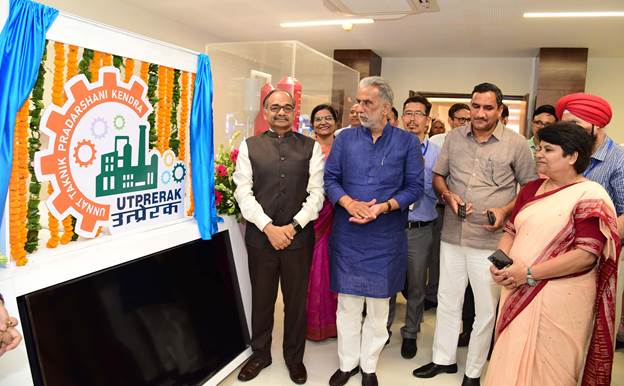
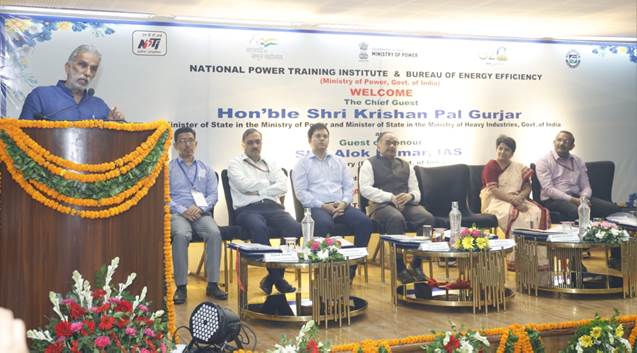
On the occasion, the Union Minister unveiled the logo of the Centre and released the brochure on the Centre.
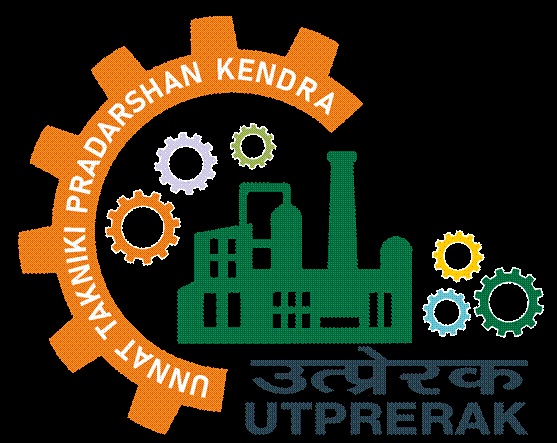
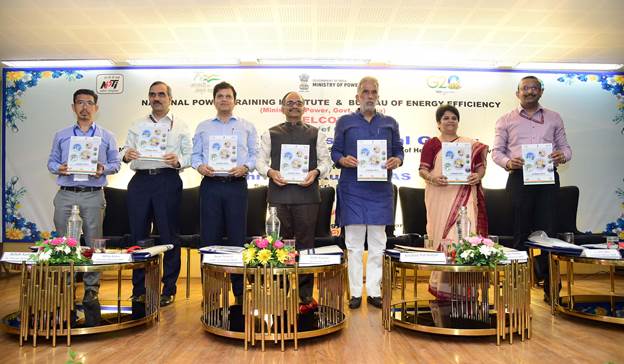
Check out the brochure here.
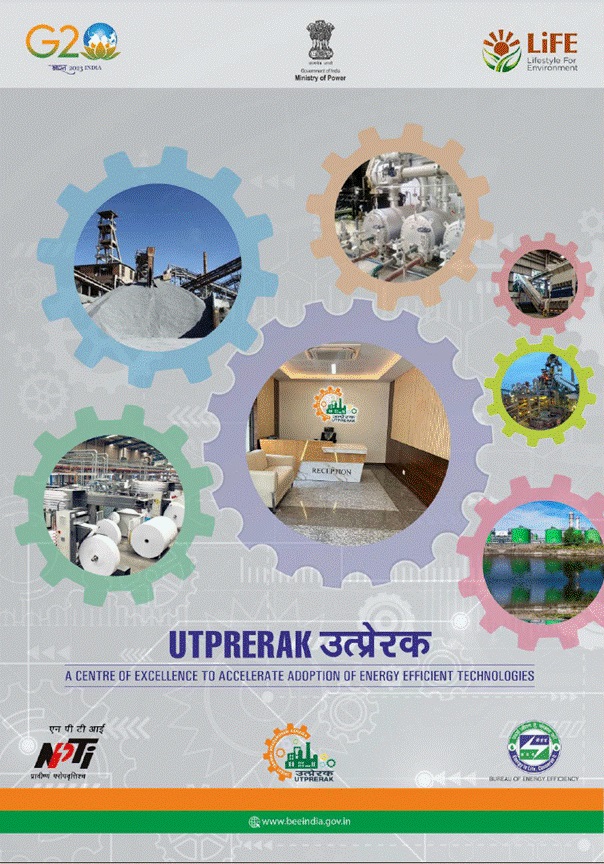
“Energy Efficient Technologies Key to Achieving India’s Emission Reduction Targets under NDCs”
Secretary, Ministry of Power, Alok Kumar highlighted the crucial role which energy-intensive technologies need to play in meeting India’s greenhouse gas emission reduction commitments under Nationally Determined Contributions (NDCs). “At COP 26 in Glasgow, the Prime Minister of India announced updated NDCs for India, one of which is cutting down India’s carbon dioxide emissions by 1 billion tons during the period 2020 – 2030. About half of this will come from deeper penetration of renewable energy, while the remaining half will come from energy-efficiency measures. The flagship Perform, Achieve and Trade (PAT) programme of BEE has been commended all over the world. In the initial cycles of PAT programme, energy efficiency margins were squeezed by better maintenance practices. Going forward, we need to introduce new technologies in our industries, which are highly energy-intensive, in sectors such as Iron & Steel, Cement, Paper, Chlor-Alkali and Textiles.”
“Going to roll out Indian Carbon Market Very Soon”
The Power Secretary said that the Centre should play a key role in helping the industry meet emission intensity reduction targets. “India is going to roll out Indian carbon market very soon, the thought is that we will give emission intensity reduction targets to the industry. To enable them to achieve these targets, we need to promote and handhold our industries in the adoption of these new technologies. UTPRERAK is to be seen in the context of this big endeavour.”
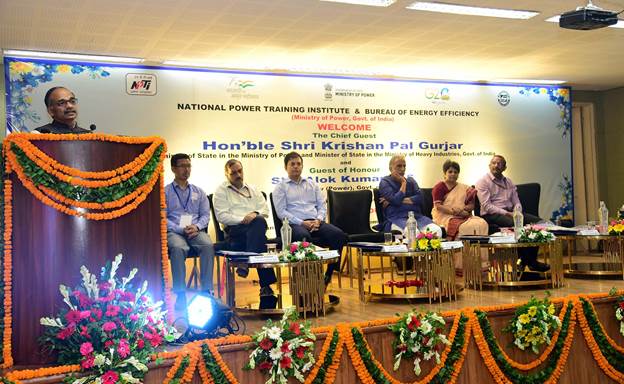
Speaking about the systems needed to make the Centre a success, the Secretary expressed the need for a Steering Committee and an Advisory Body. “To drive value out of the centre, we need to ensure that its facilities are maintained and upgraded continuously. While the Ministry of Power will allocate sufficient funds under the budget for BEE, we need to have a Steering Committee which will meet at the Centre itself, recommend necessary activities and supervise activities so that the centre is maintained well. Second, we need to see how to bring stakeholders together on this platform, so that the core objectives of the centre to disseminate technologies and accelerate their deployment by industry are achieved. Stakeholders include new engineers, energy managers, energy auditors, decision makers and manufacturers of energy efficient technologies. To bring all of them together, we should have an Advisory Body comprising industry and other stakeholders who will guide the centre in how its activities will be taken forward.”
“Success of Centre should be judged by Rate of Industry Adoption of Energy-Efficient Technologies”
The Secretary said that what is most important is knowledge exchange and information sharing at the centre. “The major role would be in interacting with industry and exchanging knowledge so that technologies are deployed. The success of this centre should be judged by the rate at which technologies are deployed in the field. Lastly, once the technologies reach a level of penetration and dissemination, they should be graduated out and we should target new technologies, the Centre should be dynamic, not static.”
The centre consists of three demo halls for demonstration of technologies for five PAT sectors to begin with, namely Iron & Steel, Cement, Paper, Chlor-Alkali and Textiles. Various energy-efficient technologies such as pre-processing systems for alternative fuels and raw materials, arrangement for feeding alternative fuels and raw materials into the kiln calciner (co-processing) and waste heat recovery systems are displayed in these rooms. The centre also has two lecture halls for training and education activities, such as learning sessions for energy professionals.
Under the guidance of BEE, the Centre will undertake collaboration and technology transfer on advanced technologies with institutes across the world. BEE would collaborate with various research institutions such as Indian Institutes of Technology (IITs), National Council for Cement and Building Materials (NCCBM), Central Pulp & Paper Research Institute (CPPRI), National Institute of Secondary Steel Technology (NISST), Jawaharlal Nehru Aluminium Research Development and Design Centre (JNARDDC), South India Textile Research Association (SITRA) and Northern India Textile Research Association (NITRA), etc., for carrying out research activities at the centre, which could in turn be demonstrated in plants after successful completion of R&D projects.
The Centre will also operate as a Regional Hub for conducting Research and Development activities for clean energy technologies in identified sectors (other energy-intensive sectors will be included subsequently). Emerging technologies such as Carbon Capture, Usage and Storage (CCUS) can be developed for the decarbonization of these sectors. When fully functional, it will have state-of-the-art facilities for networking, conferencing, training, and information dissemination on energy-efficient technologies.
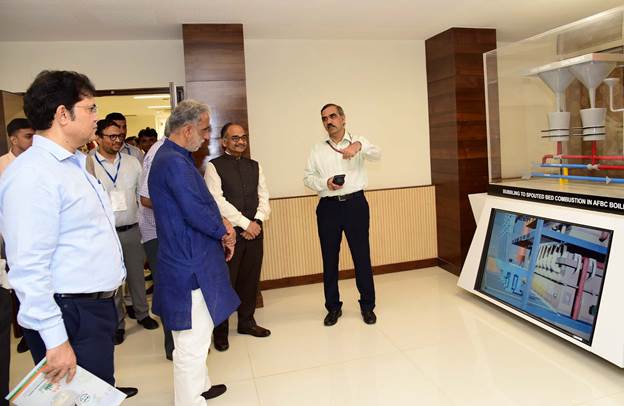
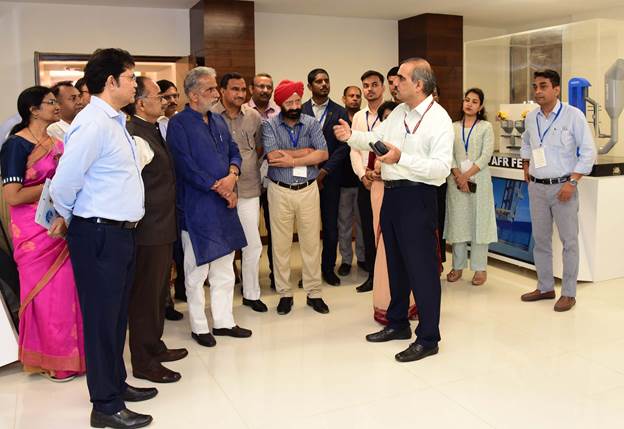
On the occasion, a Memorandum of Understanding has been signed for collaboration between BEE and NPTI.
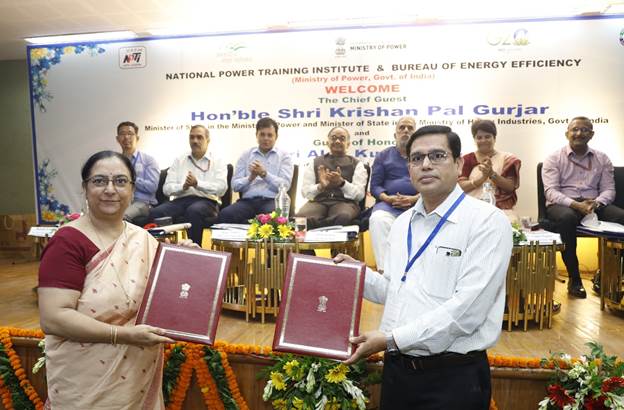
Additional Secretary, Ministry of Power, Ajay Tewari; DG, Bureau of Energy Efficiency, Abhay Bakre; DG, NPTI, Dr. Tripta Thakur; DDG, BEE, Dr. Ashok Kumar and Economic Advisor, Ministry of Power, Jitesh John were also present at the launch event, besides officers of BEE, NPTI and the media.
***
PIB DELHI | AM / DJM
(रिलीज़ आईडी: 1935484)
आगंतुक पटल : 5486